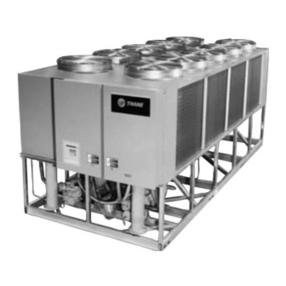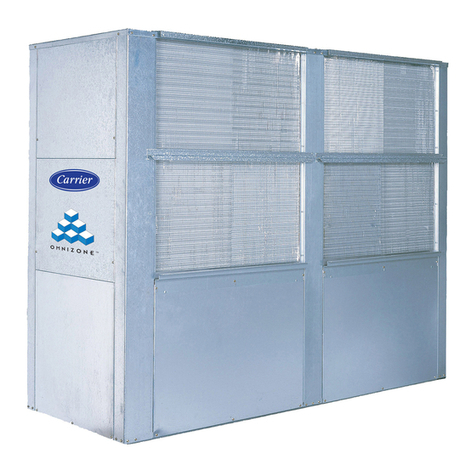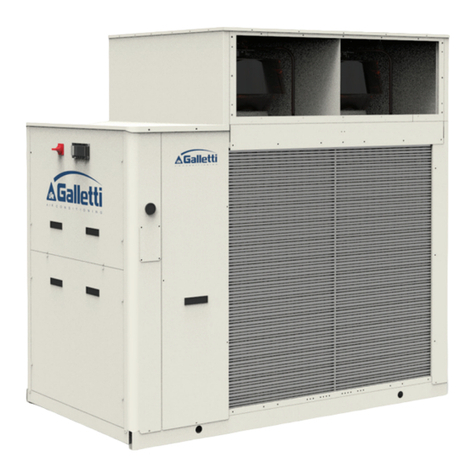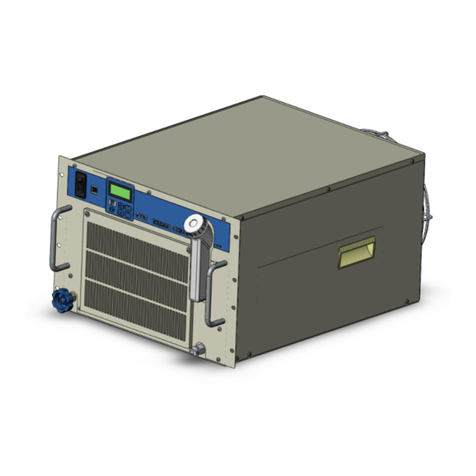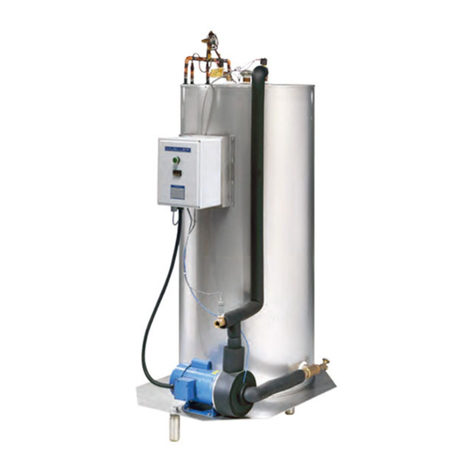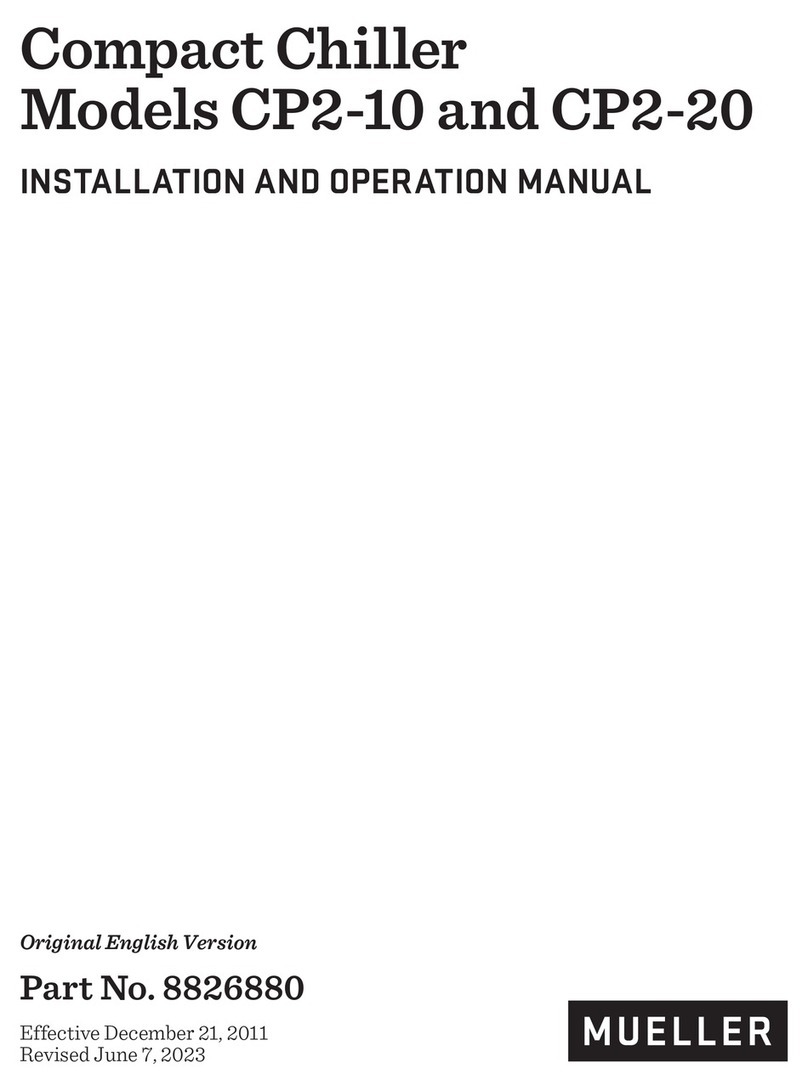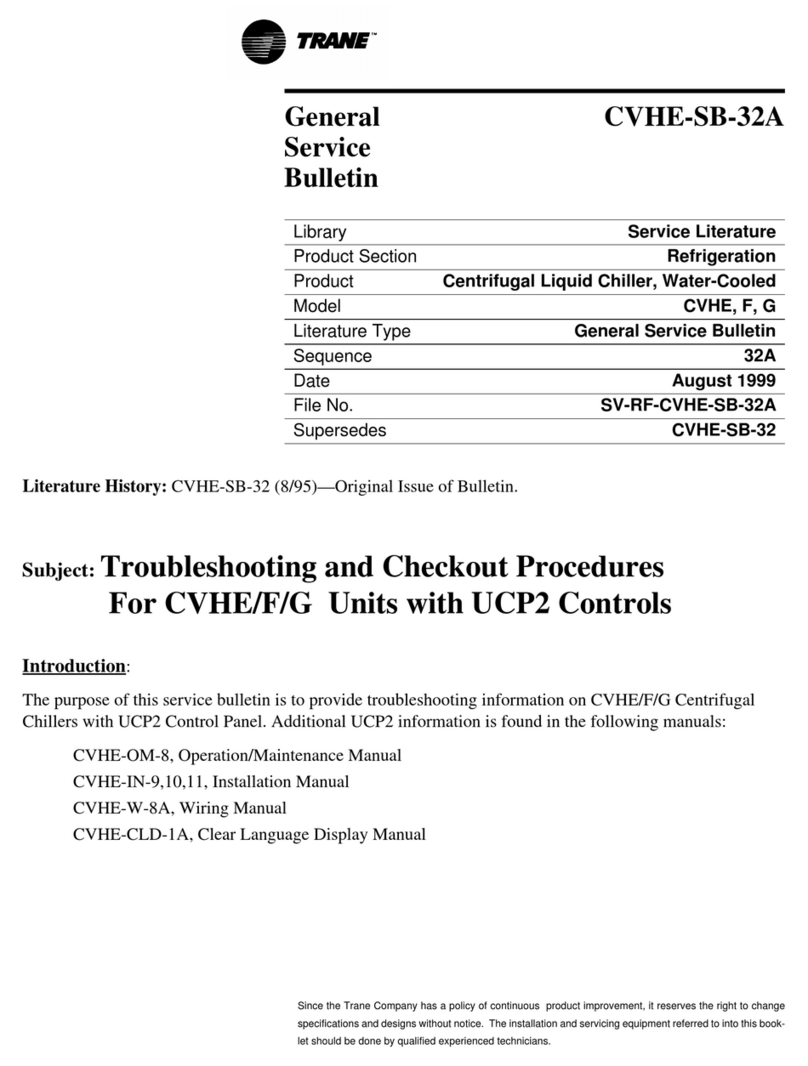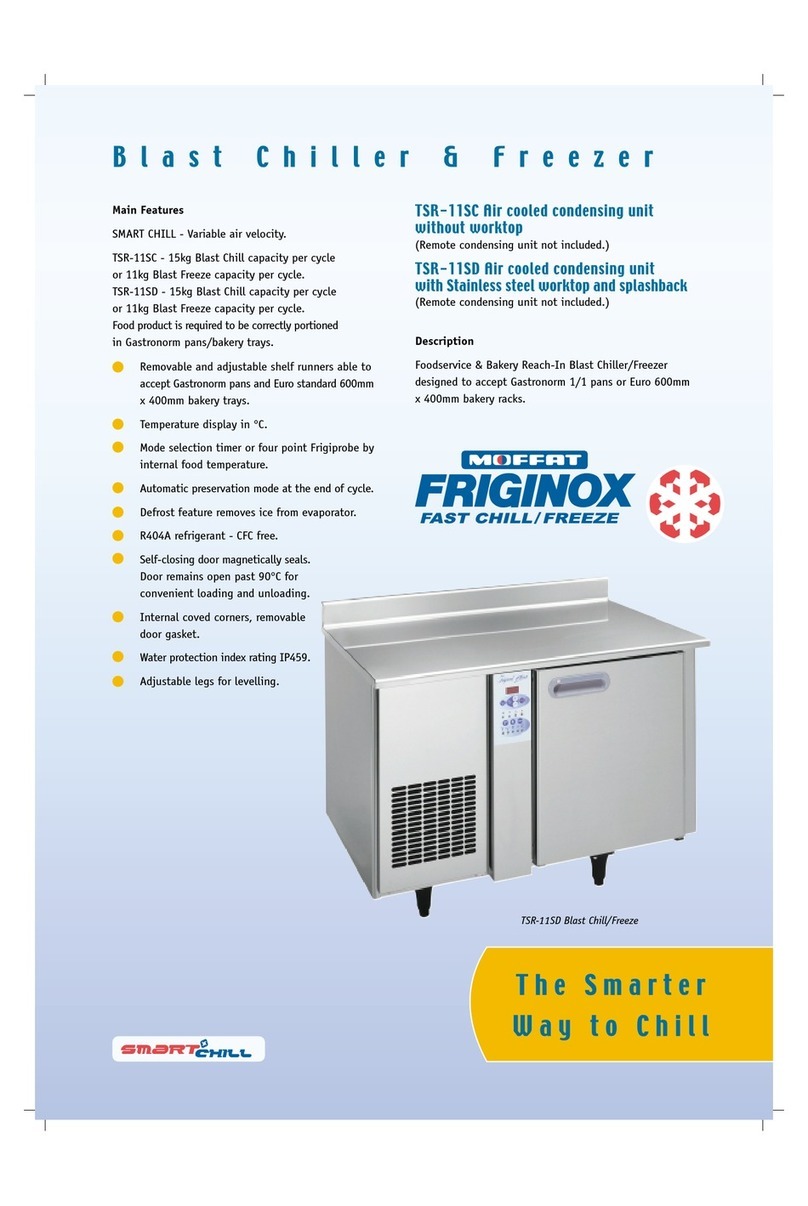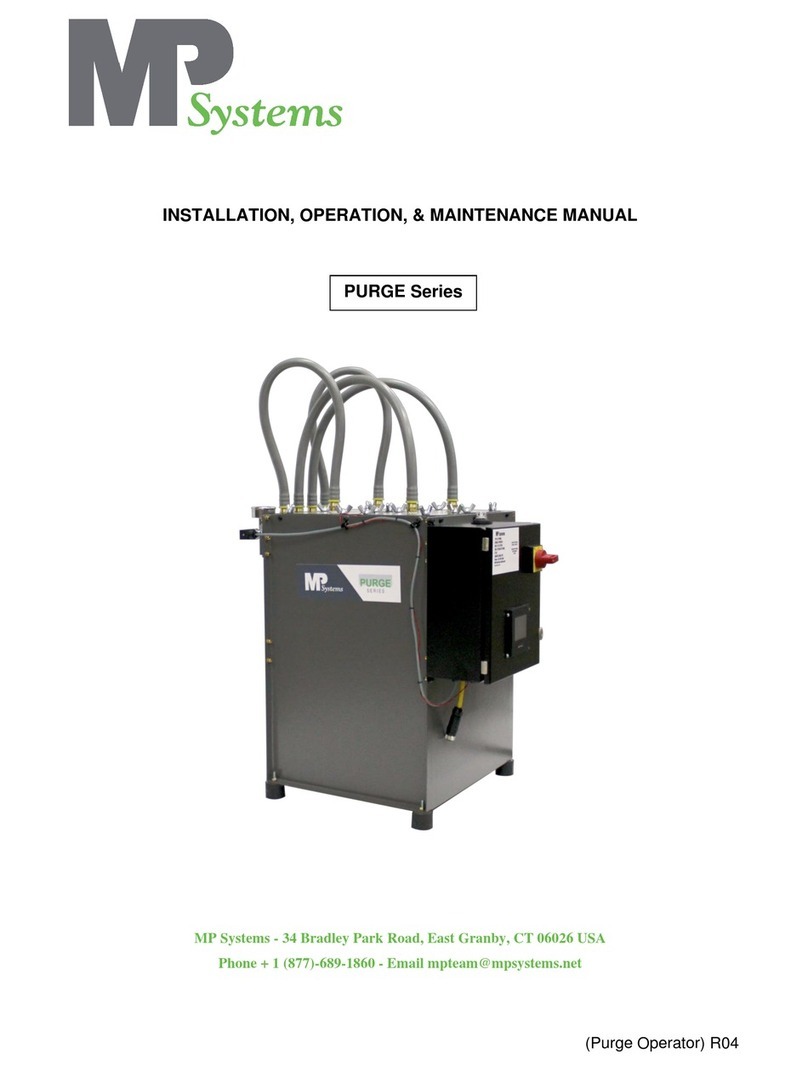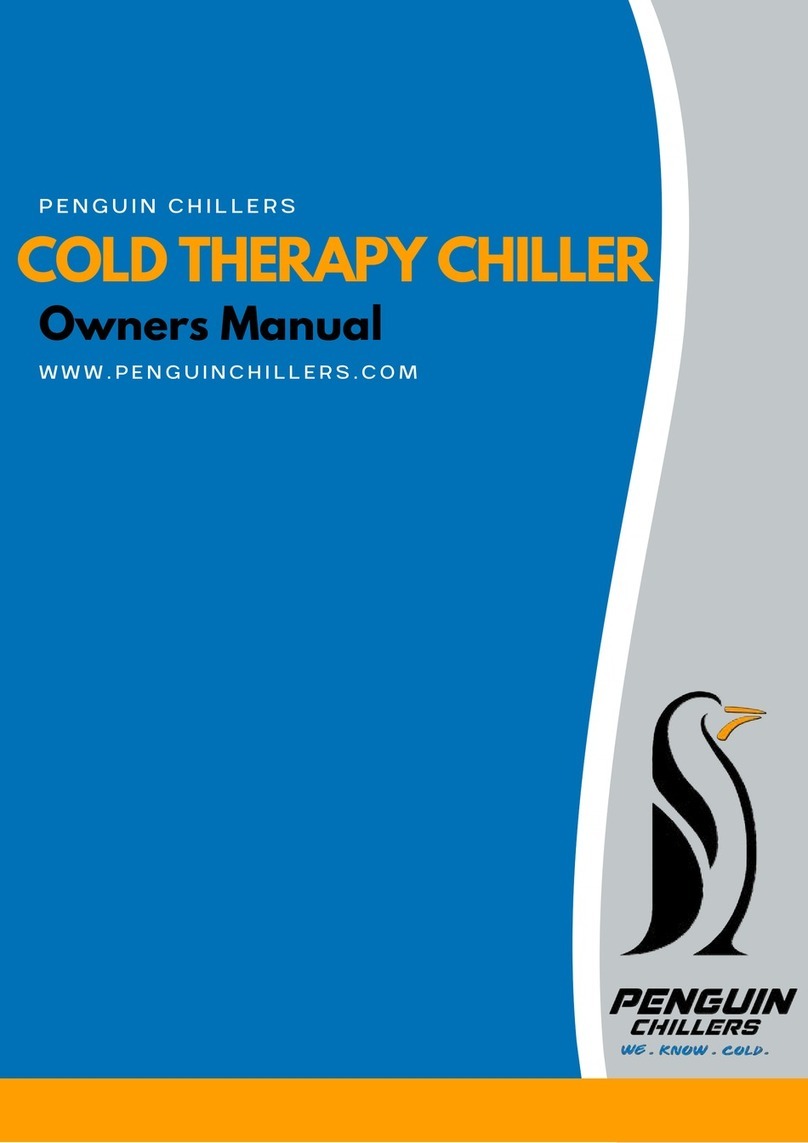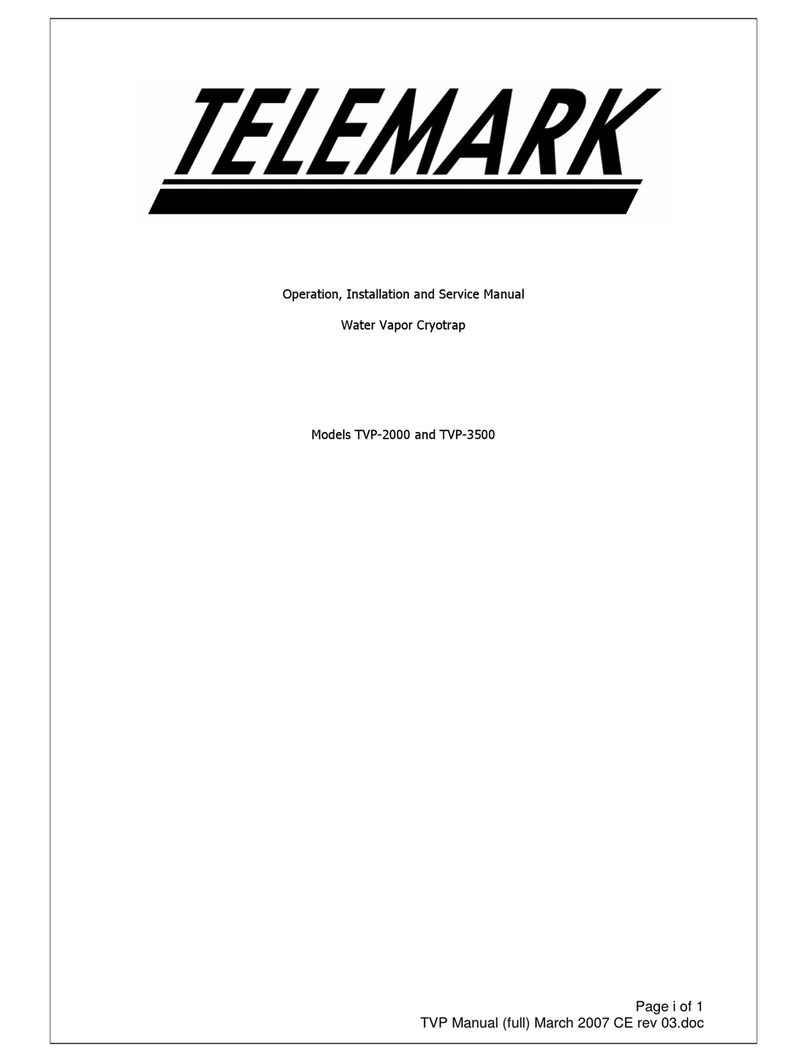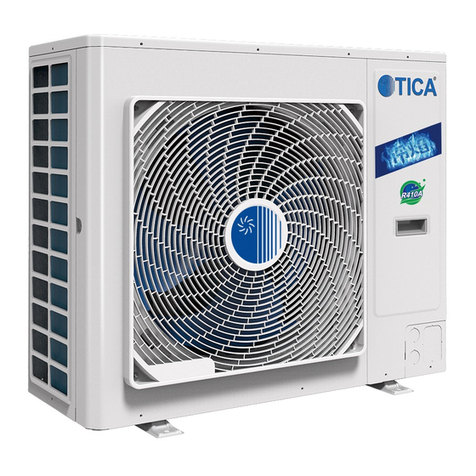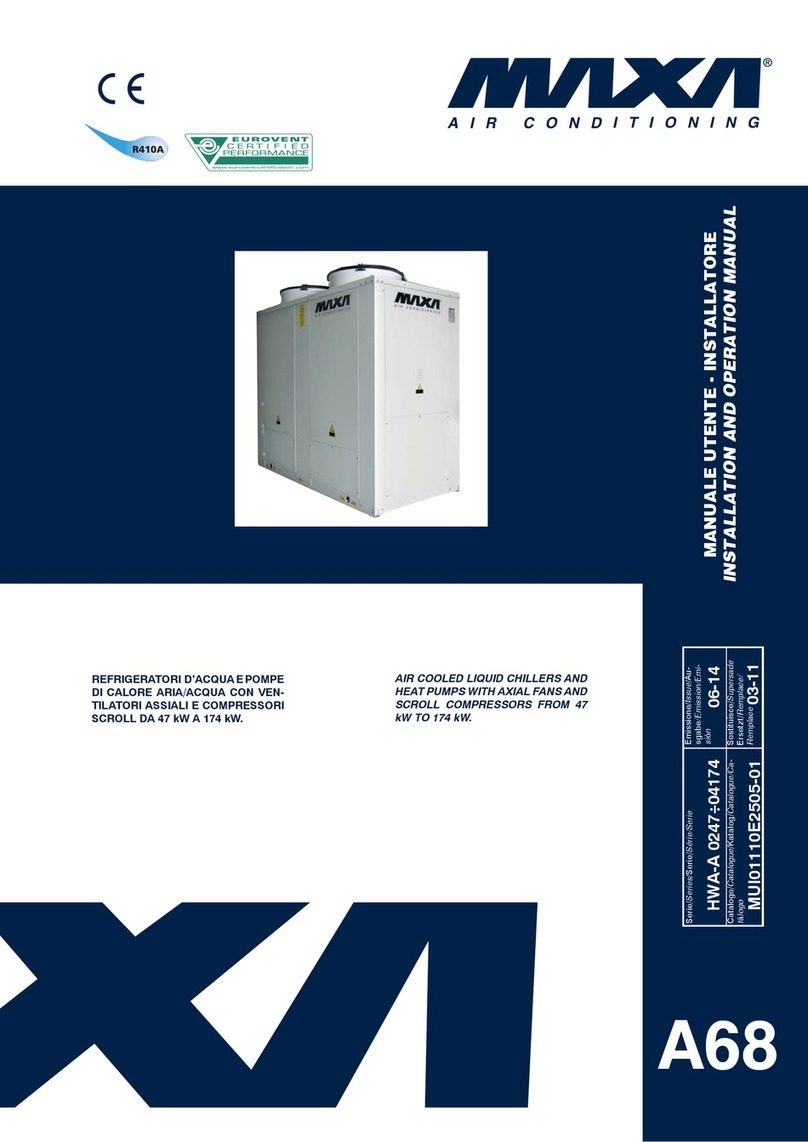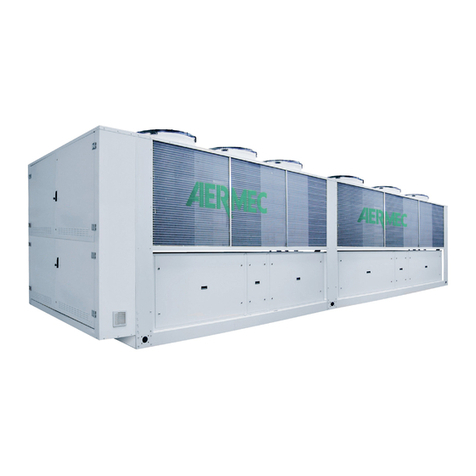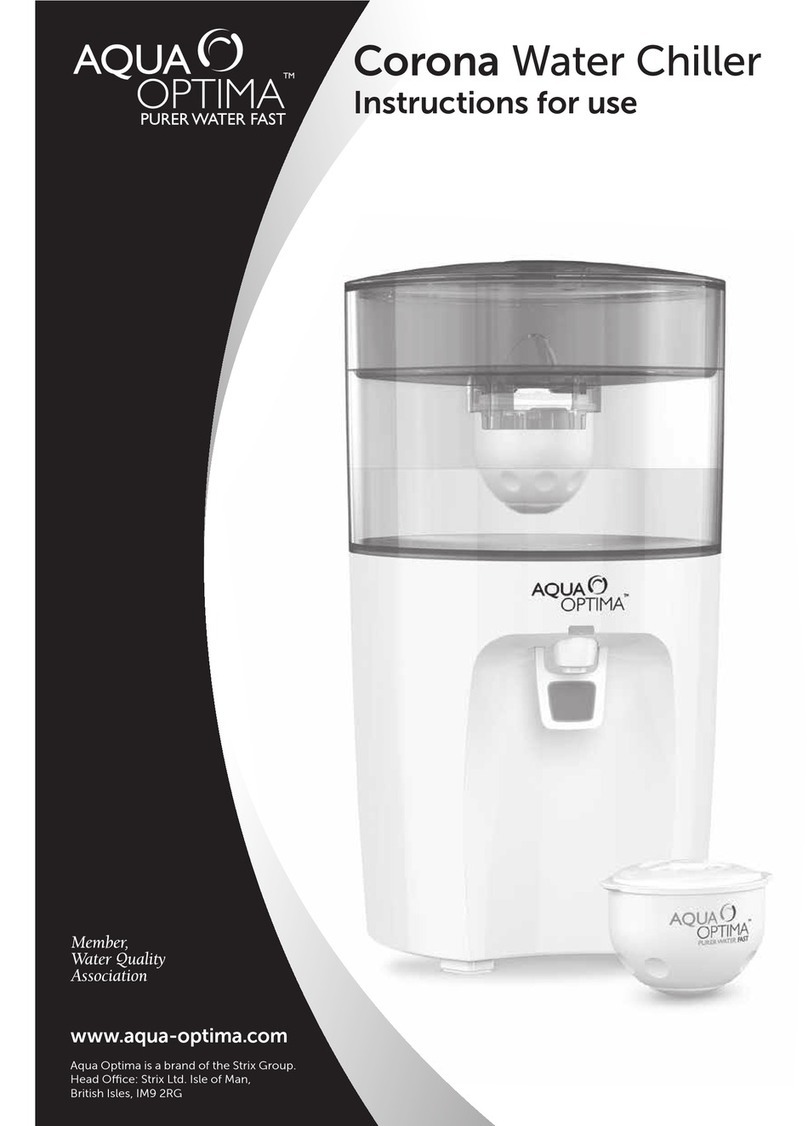
Mueller Falling Film Chiller Effective February 12, 2003
Installation and Operation Manual, Part No. 9843514 Revised April 17, 2023
3
1.3 MODEL 4 X 8 FALLING FILM CHILLER STANDARD FEATURES
• Constructed of Type 304 or 316L stainless steel.
• Designed for use with R-22, R-404A, R-507, R-134a, R-448A, or R-717.
• Electronic makeup water solenoid assembly (optional).
• Hinged and gasketed cabinet top doors (optional).
• Clamp-type ferrule and male pipe-thread adapter for the inlet (included).
• Falling film chiller expansion valves for each refrigeration plate are available.
• Refrigeration capacity and refrigerant type must be specified at the time of order.
A. Required Water Flow Rates
1. High-flow distribution pan:
Minimum flow rate: 31.0 gpm per plate
Maximum flow rate: 50.2 gpm per plate
2. Low-flow distribution pan:
Minimum flow rate: 17.9 gpm per plate
Maximum flow rate: 28.7 gpm per plate
3. Extra-low-flow distribution pan:
Minimum flow rate: 8.3 gpm per plate
Maximum flow rate: 15.5 gpm per plate
B. Nominal Operating Capacity of Insulated Tank*
• 2–8 plates: 293 U.S. gallons • 17–24 plates: 750 U.S. gallons
• 9–16 plates: 525 U.S. gallons • 25–32 plates: 1,113 U.S. gallons
*Tankless cabinets with 2–8, 9–16, and 17–24 plates are also available.
C. Circulation Water Connection Size
• 2–8 plates: Inlet: Single, extra-low-flow pan, 2" MPT Outlet**: 4" MPT
• 2–8 plates: Inlet: Single, extra-low-flow pan, 4" MPT Outlet**: 4" MPT
Inlet: Single, low-flow pan, 4" MPT Outlet**: 4" MPT
Inlet: Single, high-flow pan, 6" MPT Outlet**: 4" MPT
• 9–16 plates: Inlet: Dual, extra-low-flow pan, 4" MPT Outlet**: 6" RFSO pipe flange
Inlet: Dual, low-flow pan, 4" MPT Outlet**: 6" RFSO pipe flange
Inlet: Dual, high-flow pan, 6" MPT Outlet**: 6" RFSO pipe flange
